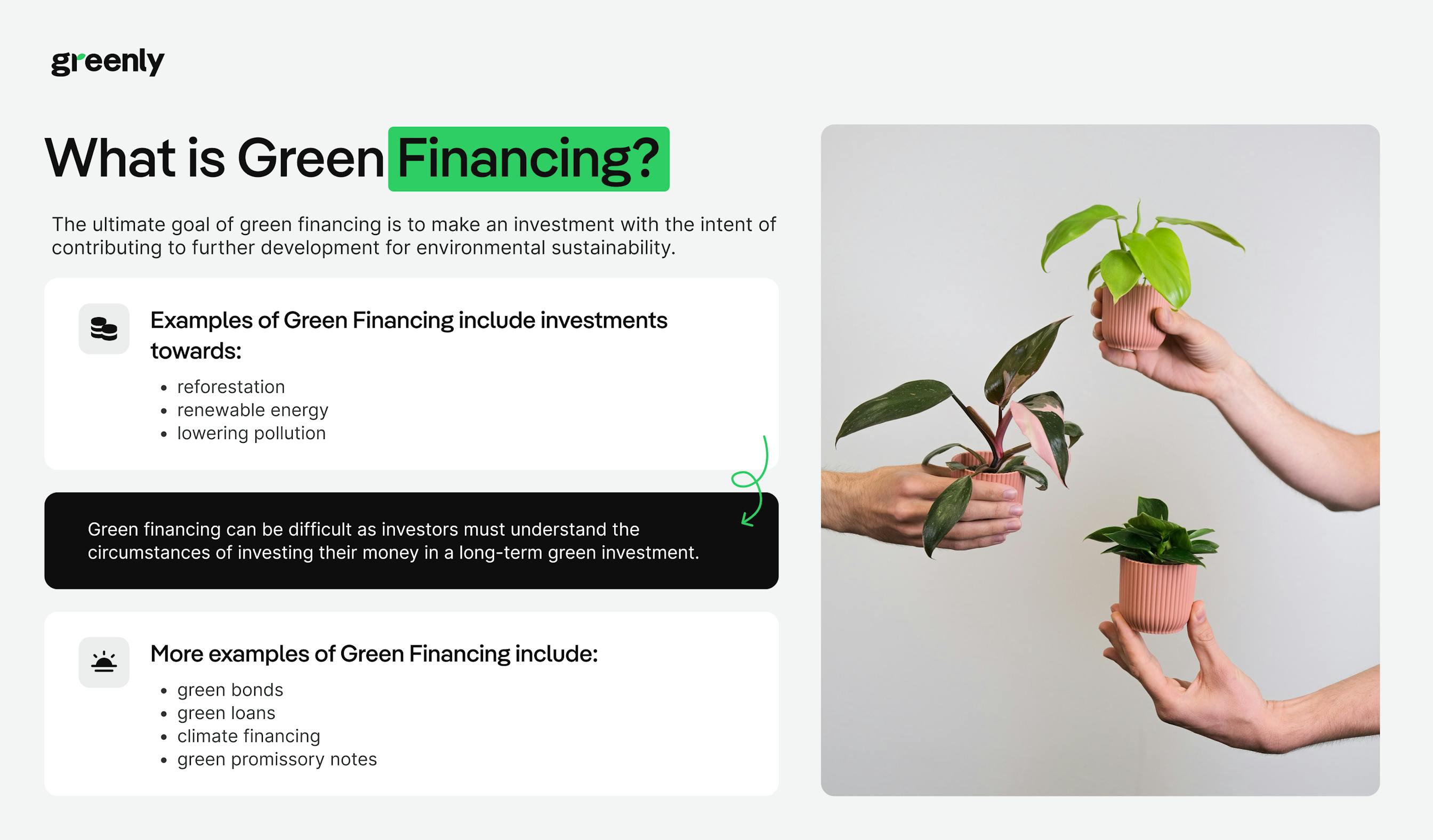
California Climate Accountability Package: SB253, SB261, & SB252
What is the California Climate Accountability Package, and how do SB 253 and SB 261 (SB 219), and SB 252 help the state work towards their environmental goals?
ESG / CSR
Industries



Why financed emissions are increasingly important
Which types of companies must report their financial emissions
How to accurately calculate and report finance emissions
It can be confusing to keep track of all the different kinds of emissions out there – from greenhouse gasses, carbon dioxide, scope emissions, and now: financed emissions.
In this article, we’ll explore what financed emissions are, how they could prove useful, and what role they play in the midst of climate change and the world trying to develop more sustainable and transparent businesses.
Financed emissions refer to the carbon emissions that are created as a result of a financial investment on behalf of an individual or company. These emissions can also result from the financial activities of investment managers, banks, and insurers.
As the push for ESG-friendly and green investments continue, efforts to control the emissions created by non-green investments are beginning to see the light – and that’s where financed emissions come into play.
There is less incentive for people to choose green investments than there is for people to choose healthy snacks, therefore – financed emissions will work to make the emissions created by financial investments more transparent.
As many companies created a sizable carbon footprint from their financial activities alone, financial emissions will serve a pivotal role in the world’s efforts to mitigate the effects of climate change.
Financial emissions are important seeing as financial organizations play a key part in ensuring we successfully transition to a low carbon economy. In other words, without reporting financed emissions – it would prove more difficult to create the sustainable economy that our planet needs.

Financed emissions are important seeing as more companies contribute to carbon or greenhouse gas emissions solely through their investments than you might think. It is important to monitor and keep track of these financed emissions if the U.S. and the rest of the world want to transition to a low carbon economy.
The overview cards below will reveal the importance of financed emissions:
For banks and investors, financed emissions often make up more than 90% of their total carbon footprint — far outweighing operational emissions.
Every loan or investment indirectly funds real-world activities — meaning capital allocation directly influences global carbon outcomes.
Measuring financed emissions is essential for financial institutions aiming to align portfolios with net-zero goals and the Paris Agreement.
Financed emissions extend across industries and borders, amplifying a company’s global sustainability influence through lending and investments.
Understanding financed emissions helps direct funding toward low-carbon technologies and green projects, accelerating climate action.
Reporting financed emissions enhances investor trust and regulatory compliance under frameworks like PCAF and TCFD.
For example, banks like Wells Fargo and Bank of America, which offer checking and savings accounts to millions of Americans – often make use of fossil fuels to be able to pay out interest rates for those savings accounts.
Some well-known banks like JP Chase Morgan have only provided more funding to fossil fuel companies, having funded over $380 billion dollars since 2016 with no signs of slowing down any time soon. This is incongruent with the recommendations for banks depicted in the Paris Climate Agreement, which state that setting and disclosing both long-term and short-term emission reduction targets is essential. As it turns out, many banks in the U.S. have failed to do this – meaning financed emissions may be the only solution.

Financed emissions act much like scope 3 emissions (which refer to any emissions that don’t fall under scopes 1 or 2) – as in that financed emissions could be the mystery culprit for excess emissions created by a company. As a result, financed emissions can help businesses making an effort to reduce their carbon emissions to pinpoint the financial institutions contributing to their carbon footprint – and make changes accordingly to achieve their emission reduction goals. This continues to solidify the importance of financed emissions.
The flip cards below will reveal why common banks such as Chase, Wells Fargo, Bank of America, and HSBC do not help in the realm of financed emissions:
In addition to this, it is probable that investors will no longer be interested in working with these types of financial institutions as sustainability movements and effort towards environmental reform is becoming one of the top selling points to attract new investors. Financial institutions indirectly responsible for carbon emissions won’t be likely to draw interest to customers, individuals, or companies looking to go green.
Ultimately, the financial sector's continued disregard to implement tactics that will help fight against climate change have raised concerns on how the emissions created by the industry will be addresses once and for all, but financed emissions could be the answer.
Not all entities are required to report their financed emissions, but the more that aim to do so – the better.
However, there are few instances where under normal circumstances – disclosing financed emissions will be required: such as with banks, insurance companies, and asset managers. This is due to the fact that these are all entities that provide day-to-day funding for businesses, meaning that these financial institutions can have a daily impact on the company’s carbon footprint.
The summary cards below will reveal which entities are most often required to report financial emissions:
Even though not all companies or organizations are required to report or disclose their financed emissions, many are interested in sharing their financed emissions anyways, seeing as many investors prefer to invest in companies that take every precaution possible to reduce their environmental impact.
Under normal circumstances, only financial institutions banks, asset managers, and insurance companies are required to disclose their financed emissions – but other entities may be interested in voluntarily sharing their financed emissions as well in order to appeal to investors.

Investments will continue to be a big part of the financial market, especially as investors grow more aware of more sustainable financial schemes such as green financing, impact investing, and socially responsible investing.


Is there an institution that can help firms to manage all of these new financial expectations in the midst of climate change?
Turns out there is, as the Partnership for Carbon Accounting Financials (PCAF) works as a global partnership determined to pontificate the importance of transparency of the financial industry and align with the goals of the Paris Agreement. In addition to this, the PCAF also strives to incorporate values depicted in the Science Based Targets initiative (SBTi) and the Task Force on Climate-Related Financial Disclosures (TCFD) – both of which can prove useful for those seeking to disclose their financed emissions.
The overview cards will reveal how the PCAF can help entities with financed emissions:
In fact, according to the official PCAF website, as of September 2023 – 142 financial institutions have already disclosed their finance-related emissions, with 286 institutions committed to the process of disclosing their financed emissions as well.
Financed emissions may seem complicated and intimidating to report, but the great news is that financial institutions can resort to the help of global partnerships such as the PCAF to ensure success.
While seeking to disclose financed emissions is a good idea, there could be some challenges in the process.
For instance, calculating financed emissions is a meticulous process – seeing as financed emissions are often calculated through the use of a specific formula that resembles the same methodology demonstrated by the PCAF.
This requires multiplying an attribution factor (otherwise known as the investee’s estimated share of emissions in relation to the loan or investment, or their outstanding amount divided by their total equity and debt combined) by the emissions created by the investee.
The vertical timeline below will reveal the process of disclosing financed emissions:
Recognize that financed emissions disclosure is valuable but meticulous. Secure buy-in, scope your portfolios, and set timelines & controls for a careful process.
Collect positions for loans, bonds, equity, and project finance along with investee identifiers, outstanding amounts, and the best available emissions data (reported or estimated).
Apply a PCAF-style approach for consistency and comparability across asset classes, aligning with market practice for financed emissions accounting.
Determine your share of an investee’s emissions using an attribution factor that reflects your exposure relative to the investee’s capital structure.
Attribution Factor = Outstanding Amount ÷ (Investee Equity + Investee Debt)
Multiply the attribution factor by the investee’s emissions (reported or estimated) to obtain your financed portion.
Financed Emissions = Attribution Factor × Investee Emissions
Sum results across holdings, document data quality scores, handle data gaps transparently, and perform QA reviews to reduce errors and inconsistencies.
Publish portfolio-level results with methods and assumptions, then use insights to set targets, engage investees, and refine data and calculations over time.
However, estimations and educated guesses are often required seeing as a lack of emissions data on behalf of the investee or investor. This means that financed emissions can only be calculated when all sources comply with providing the relevant information and data – something not all parts of the equation may be willing to do.
According to the World Resource Institute's recent paper on the relationship between banking and climate change, additional struggles of seeking to disclose financial emissions or other financial data include:
However, just because the current circumstances could make calculating and disclosing financed emissions difficult – doesn’t mean that it's impossible.

In order to determine the best way to disclose your company or institution’s financed emissions, it is first important to understand how the reporting requirements for financed emissions work.
Disclosing financed emissions can vary depending on the location the company or institute is looking to disclose their financed emissions. For instance, if the institution is in the E.U., the regulatory framework to follow would be the Sustainable Finance Disclosure Regulation (SFDR). On the other hand, institutions in the U.S. may be more likely to follow guidelines provided by the SEC.
There are baby steps that your company can take to comply with the demands associated with disclosing financed emissions. For instance, your company’s CSO or sustainability leader can seek to implement ESG values into your business’s future investment choices. This can help to mitigate future financed emissions, and also can allow more environmentally friendly investments to approach your business.
Here are some of the ways you can tackle your company's financed emissions:
In addition to this, seeking to engage with both internal and external stakeholders is a greater way to raise awareness on the emissions created by financial activities. This can help stakeholders and financial institutions to drive new ideas to avoid future financed emissions and illustrate their commitment to bringing sustainable change to the industry.
Once these baby steps have been taken, it’s a great idea to follow the regulatory framework relevant to your location and then seek the help of a global partnership such as the Partnership for Carbon Accounting Financials (PCAF) to properly commit to disclosing your financed emissions.
Financing emissions are yet another facet of an entity's carbon footprint that is essential to manage, but your company’s effort to elicit change within the financial industry could cause a ripple effect that could standardize and simplify the process to disclose financed emissions in the future.
If reading this article about financed emissions has made you interested in reducing your carbon emissions to further fight against climate change – Greenly can help you!
Keeping up with all these terms from scope emissions to financed emissions can prove challenging, but don’t worry – Greenly is here to help. Click here to schedule a demo to see how Greenly can help your company to build climate resilience and remain functional during a natural disaster.
Greenly can help you make an environmental change for the better, starting with a carbon footprint assessment to know how much carbon emissions your company produces.